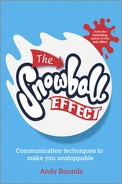35
When you want to use “word pictures” to help people remember things
Here’s a great way to help people remember your key messages. I’m going to use the seven drivers of shareholder value as my example:
So, my question: If I asked you to memorize all seven, such that you could recall them weeks from now, how would you do it?
I guess you’d read the list a few times until it stuck? But that’s boring, takes ages, and won’t stay in your long-term memory. You’d remember some tomorrow, but in a week?
One of my previous jobs involved teaching accountants how to pass their professional exams. This list was one of the many lists they had to remember. And, as you’ve just seen, it’s pretty forgettable – especially in a pressurized exam room. So, instead of learning this list, I asked them to imagine something very different:
Here’s how the two lists are linked:
You’re much more likely to remember this second list. My students did. And when it mattered: in the exam room. In fact, I met one of them recently for the first time in 10 years. He told me he could still remember it!
As well as being useful, “word pictures” are just more fun than a “word list”, aren’t they? I mean, which do you prefer?
So, when you’ve got a few key messages that people need to recall instantly, consider using a “word picture”. The more unusual the pictures, the more impactful they are (just like the “don’t think of a green hippo” idea).
Your lists don’t need to be as long as my example. For instance, let’s say you only want to remember three techniques from this book – think outside the box (chapter 37), have pit-stop meetings (chapter 7) and use BO to get a “yes” (chapter 18), you might use:
- A cardboard box with arms and legs (think outside the box).
- Standing on a Formula One car in the pits (pit-stop meetings).
- Spraying deodorant under his smelly armpits (BO).
As you can see, these can be pretty memorable.

